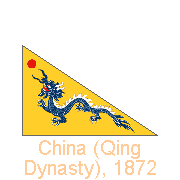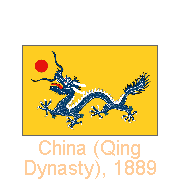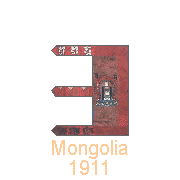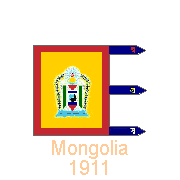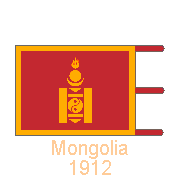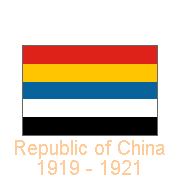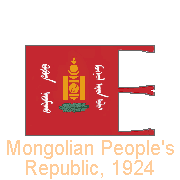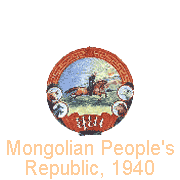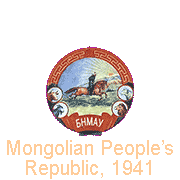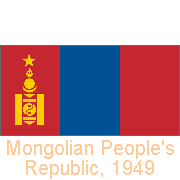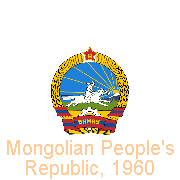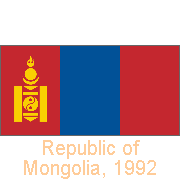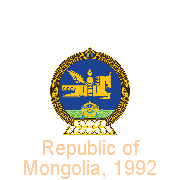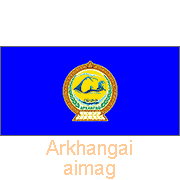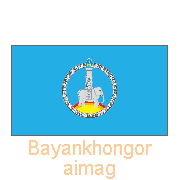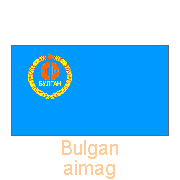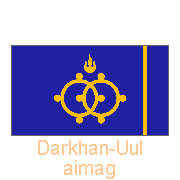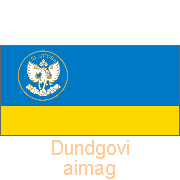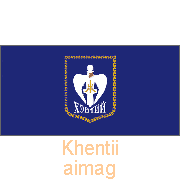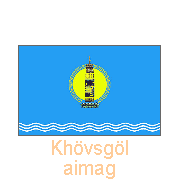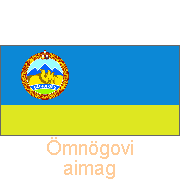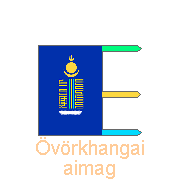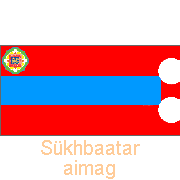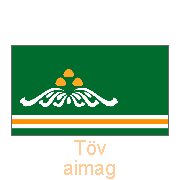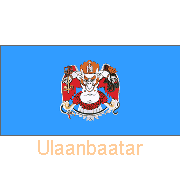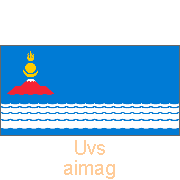Flags from Mongolia
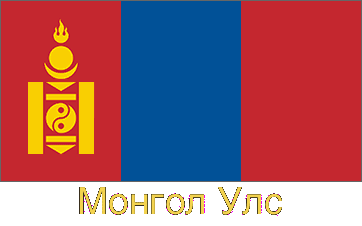
A Flag history and Provinces of Mongolia
Mongolia came under Manchu rule in the 17th century, when the Qing Dynasty ruled China. Around 1862 it had adopted a triangular jack which came to be used as the state flag in 1872. It featured a dragon, a symbol of Imperial power, on a field of yellow, representing the Manchu and the Imperial colour. The dragon was represented with a red “zhu”, a pearl, symbolising power and glory. In 1889 a rectangular flag was adopted, with basically the same design.
you may then send it as a postcard if you wish.
On 29 December 1911, Outer Mongolia declared its independence from the Qing Dynasty when it was overthrown. The eighth Jebtsundamba Khutuktu (Buddhist spiritual leader) was enthroned as Mongolia’s Bogd Khan (Great Khaan or Emperor). A dark red flag was adopted featuring the “Soyombo”, the national symbol of Mongolia. The flag had three tails from the fly and text in Soyombo script, invented by Zanabazar, the first Mongolian spiritual leader; it served as the alphabet for Mongolian Buddhism.
The Soyombo is the national emblem of Mongolia, whose origins are closely associated with Tibetan (and Mongolian) Buddhism. The elements in the Soyombo, from the top, have the following significance:
- Fire is a symbol of growth, revival, wealth, success, the family hearth; the three tongues of the flame represent the past, present, and future;
- The sun and moon links to the pre-Buddhist nature religion of the Mongols and symbolises that the Mongolian nation will exist for eternity under a blue sky;
- The two triangles allude to the point of an arrow or spear, and downward-pointing means death to the enemies of the Mongols;
- Two horizontal rectangles represent honesty and justice of the people, whether they are rulers or ordinary people;
- The “Arga-Bilig” or Yin and Yang symbol represent dark and light, female and male, cold and hot - the unity of all opposites in the cosmos. In Mongolian symbolism, it also suggests two fish which, because fish never close their eyes, signify vigilance;
- The two vertical rectangles can be interpreted as the walls of a fortress, relating to the old Mongolian proverb “The friendship of two is stronger than stone walls”. The fortress symbol signifies that the unity of the Mongol people is the foundation of the nation’s strength.
Initially, the Soyombo and other Buddhist symbols were placed on the flag in different colours with religious meanings under the Bogd Khan. The design was not uniform. In 1919 Chinese troops invaded to bring Outer Mongolia back under Chinese rule. The flag of the Republic of China was raised in February 1920, in a ceremony in Urga, the capital (now Ulaan Baatar); Mongolia was formally reincorporated into China. However, troops commanded by Baron Von Ungern-Sternberg invaded from the north and, after furious battles with the Chinese, captured Urga in February 1921. Mongolia’s independence was proclaimed again on 11 July 1921, and its flag was restored.
The Bogd Khan died in May 1924, and six months later, the Mongolian People’s Republic was proclaimed and adopted a red flag with the “Soyombo” in yellow. It had three red tails from the fly, and the name of the country - Bügd Nairamdakh Mongol Ard Uls - was inscribed in Mongolian script on both sides of the national symbol. In 1939, after the victory of Mongolian and Soviet troops against the Japanese in the Battle of Khalkhin Gol, the river on the border with the Japanese puppet state Manchukuo (Manchuria), branches of Nelumbo, a type of lotus flower, a symbol of victory, were added. In 1940 the flag of the Mongolian People’s Republic was “modernised” slightly, resulting in the loss of its three tails. And in 1941, after the introduction of the Cyrillic script, the old Mongolian writing was removed from the flag. A national emblem was adopted in 1940, which was altered the following year, replacing the country’s name in Mongolian script with the abbreviation in Cyrillic.
On 23 February 1949, Mongolia adopted a new national flag, a vertical tricolour of red - light blue - red; light blue, the colour of the sky, is considered the national colour. The stripe at the hoist featured the Soyombo and was topped with the star of communism, all in gold. In 1960 the State arms was redrawn. In 1992, when the communist government had fallen, the star was removed. A new state emblem was adopted, featuring the Soyombo and a “wind horse” symbols of Tibetan Buddhism to symbolise independence, sovereignty and spirit.


